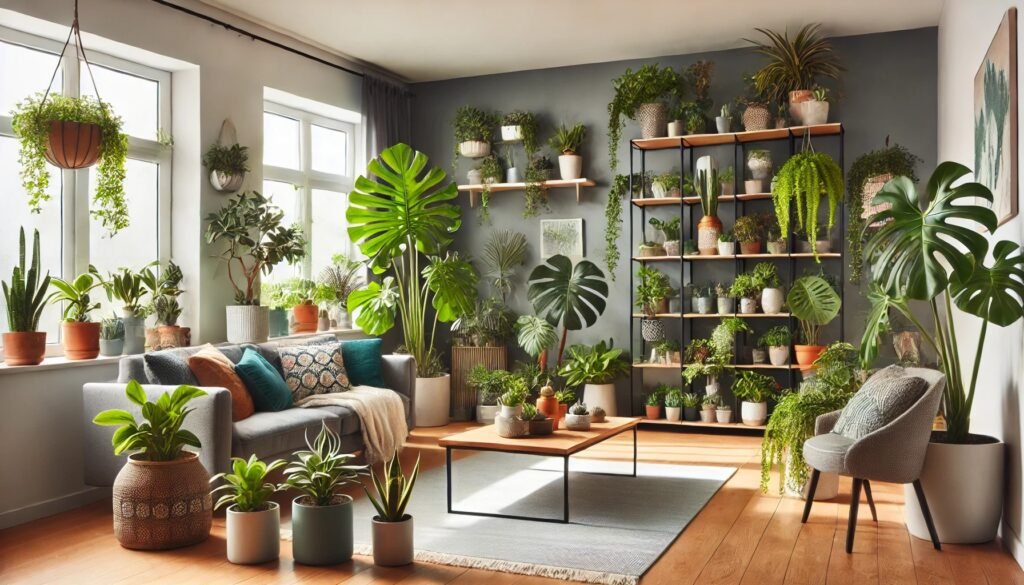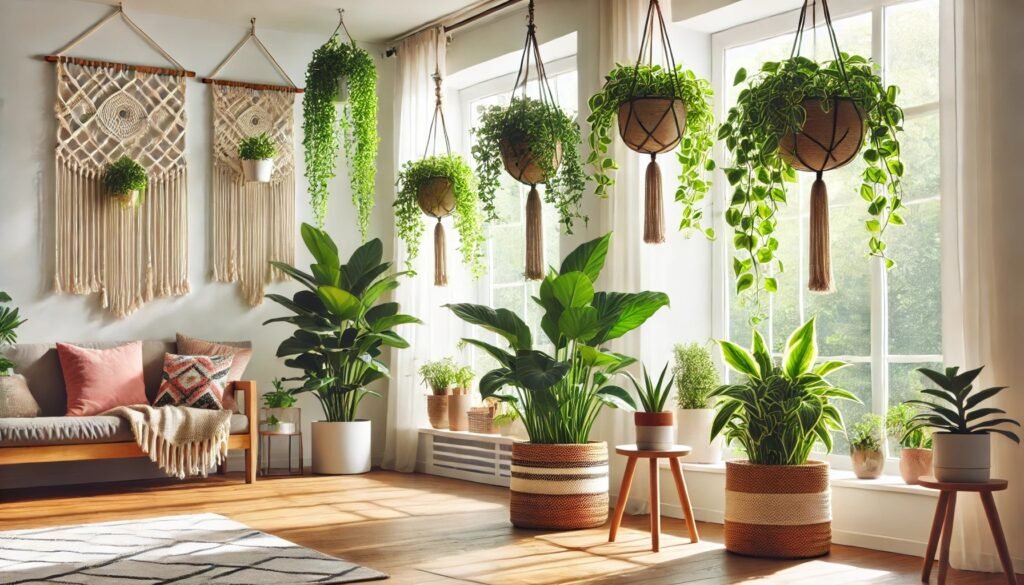
Choosing the right plants for your garden or indoor space can be overwhelming, especially with so many plant types to consider. From ornamental grasses to succulents, each plant type has its own set of characteristics, benefits, and challenges. In this article, we’ll explore the differences between some of the most common plant types, along with their pros and cons, to help you make informed decisions for your green spaces.
Ornamental Grasses: Adding Texture and Movement
Ornamental grasses bring texture, height, and movement to gardens, making them popular for landscaping. They come in various sizes, colors, and growth habits, making them versatile enough for different environments.
Pros
Ornamental grasses are low-maintenance and drought-tolerant, perfect for people with busy schedules or limited time for plant care. They thrive in various climates and soil types, adding year-round interest to your garden. Many varieties are also resistant to pests and diseases, so you won’t need to worry about infestations.
Cons
One downside of ornamental grasses is that some species can become invasive. Their ability to spread rapidly can crowd out other plants if not kept in check. Additionally, they often require occasional trimming to maintain their appearance, especially at the end of the growing season.
Succulents: A Trendy, Low-Water Option
Succulents have become a favorite among plant lovers due to their striking appearance and easy care requirements. These plants store water in their thick, fleshy leaves, making them ideal for arid environments and indoor spaces with minimal watering needs.
Pros
Succulents are drought-resistant, making them a great option for those looking for a low-water plant. They thrive in sunny locations and require very little maintenance. You can also find succulents in a variety of shapes, colors, and sizes, giving you plenty of design options for your home or garden.
Cons
Despite their low-water needs, succulents are prone to root rot if overwatered. They can also be sensitive to cold, so outdoor succulents may require extra protection during the winter months. Another challenge is their slow growth rate, which means it may take longer for them to fill out a space compared to other plants.
Ferns: Perfect for Shaded Spaces
Ferns have been around for millions of years, thriving in shaded and humid environments. They bring a lush, tropical feel to indoor and outdoor spaces, making them popular for shaded gardens and indoor decor.
Pros
Ferns thrive in low-light conditions, which makes them ideal for areas with little sunlight. They add a soft, green aesthetic that can help create a calming environment, both indoors and out. Ferns also require minimal maintenance as long as they are placed in the right environment.
Cons
The main drawback of ferns is their high humidity requirement. This can make them challenging to grow in dry climates or homes with low humidity. Some ferns can also shed leaves frequently, which may require regular cleaning if used indoors.
Flowering Plants: Colorful and Eye-Catching
Flowering plants add vibrant color and fragrance to any garden or home. Whether you prefer annuals or perennials, flowering plants are a go-to choice for anyone looking to add visual interest to their space.
Pros
One of the biggest advantages of flowering plants is their variety. From roses to daisies, there’s a flowering plant for every climate and aesthetic. Many flowers also attract pollinators like bees and butterflies, which is great for the ecosystem. Plus, some flowering plants are edible, like lavender or nasturtiums, which can add flavor and beauty to your dishes.
Cons
Many flowering plants require more care than other types of plants. They often need regular watering, fertilizing, and deadheading to keep them blooming. Some flowering plants also have short blooming periods, so you’ll need to plan carefully if you want continuous color throughout the growing season.
Shrubs: Versatile and Sturdy
Shrubs are an essential part of any landscape, providing structure, privacy, and year-round interest. Whether evergreen or deciduous, shrubs can serve as a backdrop for other plants or as standalone features.
Pros
Shrubs are highly versatile. Evergreen varieties provide greenery throughout the year, while deciduous shrubs offer seasonal interest with their changing foliage. They are also excellent for creating natural boundaries, hedges, or windbreaks in your garden. Many shrubs are low-maintenance and can withstand a variety of weather conditions.
Cons
The size of shrubs can be a double-edged sword. While they offer privacy and structure, they can become too large if not properly maintained. Pruning may be required to keep them in check, which can be time-consuming. Some shrubs also have aggressive root systems, which can compete with other plants for nutrients.
Vines: Vertical Gardening Solutions
Vines are perfect for homeowners with limited space but a desire to create a lush, green environment. These plants climb walls, trellises, and fences, adding vertical interest to any garden or patio.
Pros
Vines make the most of vertical spaces, allowing you to grow plants even if you’re short on ground area. They can provide shade, cover unsightly structures, or create natural privacy screens. Fast-growing vines like ivy or wisteria can quickly fill in spaces, giving your garden a mature look in a short period of time.
Cons
Some vines can become invasive if not managed carefully. They tend to spread aggressively, potentially damaging structures or smothering other plants. You’ll need to prune regularly to keep vines under control. Additionally, certain species, like poison ivy, can cause skin irritation, so be sure to choose your vines carefully.
Trees: A Long-Term Investment
Trees are the backbone of any landscape. They offer shade, shelter, and aesthetic beauty, making them a long-term investment for your garden. Trees come in all shapes and sizes, from small ornamental varieties to towering giants.
Pros
One of the main benefits of planting trees is the environmental impact. Trees purify the air, provide habitat for wildlife, and can even increase property value. They are also a major source of shade, which helps cool your garden and reduces energy costs for your home.
Cons
Trees require significant space and time to grow. They may take years or even decades to reach their full size. Additionally, trees require regular maintenance, including pruning, fertilizing, and occasional pest control. If not properly maintained, trees can pose risks to your property during storms or high winds.
Final Thoughts
Understanding the differences between plant types is key to creating a beautiful, functional garden that suits your needs and space. Whether you’re drawn to the low-maintenance appeal of succulents, the colorful charm of flowering plants, or the privacy and structure of shrubs, there’s a plant type for every gardener. With the right mix of plant types, you can create a diverse and thriving garden that will provide enjoyment for years to come.
Stay connected with the world of plants! Subscribe to Phylofy for expert gardening tips, DIY projects, and eco-friendly inspiration. Join our community and nurture your love for nature. Don’t miss exclusive content and updates. Subscribe now!



